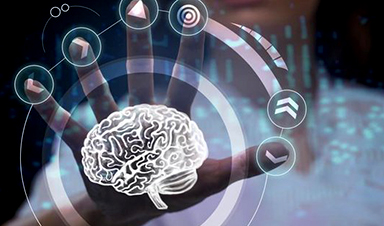Some medical technologies that use artificial intelligence might benefit patients but result in a drop in health system revenues. This could make widespread adoption of AI in medicine a tough sell.
Healthcare is a world of perverse incentives. One person’s waste is another person’s annual bonus. If you have shares in Novo Nordisk, you don’t really want people to eat more fruits and vegetables, because then sales of diabetes meds might drop. The same is true on a larger scale for hospital systems that get paid to conduct tests and perform surgeries instead of keeping people healthy.
It doesn’t pay—yet—to keep people healthy. Many entrepreneurs and government leaders are dragging the American healthcare system away from the fee-for-service model, but the road to pay for performance medical care is long and winding.
HeartFlow is the perfect example of how a positive change for patients could mean a drop in health system revenues. The company’s goal is to improve care for heart disease by avoiding both under- and over-treatment. HeartFlow takes data from a CT scan and turns it into a 3D model of the veins and arteries that supply blood to the heart.
“If our system is adopted, the net annual savings would be $2 billion for one commercial payer,” said John Stevens, MD and president of HeartFlow. “We could avoid 250,000 unnecessary procedures and even save 30,000 lives.” Stevens shared these shocking numbers at HLTH 2018 in early May in Las Vegas.
Image Credit: From article
News This Week
Nano-Enhanced Hydrogel Strategies for Cartilage Repair
A recent article in Engineering describes the development of a protein-based nanocomposite hydrogel designed to deliver two therapeutic agents—dexamethasone (Dex) and kartogenin (KGN)—to support cartilage repair. The hydrogel is engineered to modulate immune responses and promote [...]
New Cancer Drug Blocks Tumors Without Debilitating Side Effects
A new drug targets RAS-PI3Kα pathways without harmful side effects. It was developed using high-performance computing and AI. A new cancer drug candidate, developed through a collaboration between Lawrence Livermore National Laboratory (LLNL), BridgeBio Oncology [...]
Scientists Are Pretty Close to Replicating the First Thing That Ever Lived
For 400 million years, a leading hypothesis claims, Earth was an “RNA World,” meaning that life must’ve first replicated from RNA before the arrival of proteins and DNA. Unfortunately, scientists have failed to find [...]
Why ‘Peniaphobia’ Is Exploding Among Young People (And Why We Should Be Concerned)
An insidious illness is taking hold among a growing proportion of young people. Little known to the general public, peniaphobia—the fear of becoming poor—is gaining ground among teens and young adults. Discover the causes [...]
Team finds flawed data in recent study relevant to coronavirus antiviral development
The COVID pandemic illustrated how urgently we need antiviral medications capable of treating coronavirus infections. To aid this effort, researchers quickly homed in on part of SARS-CoV-2's molecular structure known as the NiRAN domain—an [...]
Drug-Coated Neural Implants Reduce Immune Rejection
Summary: A new study shows that coating neural prosthetic implants with the anti-inflammatory drug dexamethasone helps reduce the body’s immune response and scar tissue formation. This strategy enhances the long-term performance and stability of electrodes [...]
Scientists discover cancer-fighting bacteria that ‘soak up’ forever chemicals in the body
A family of healthy bacteria may help 'soak up' toxic forever chemicals in the body, warding off their cancerous effects. Forever chemicals, also known as PFAS (per- and polyfluoroalkyl substances), are toxic chemicals that [...]
Johns Hopkins Researchers Uncover a New Way To Kill Cancer Cells
A new study reveals that blocking ribosomal RNA production rewires cancer cell behavior and could help treat genetically unstable tumors. Researchers at the Johns Hopkins Kimmel Cancer Center and the Department of Radiation Oncology and Molecular [...]














Leave A Comment